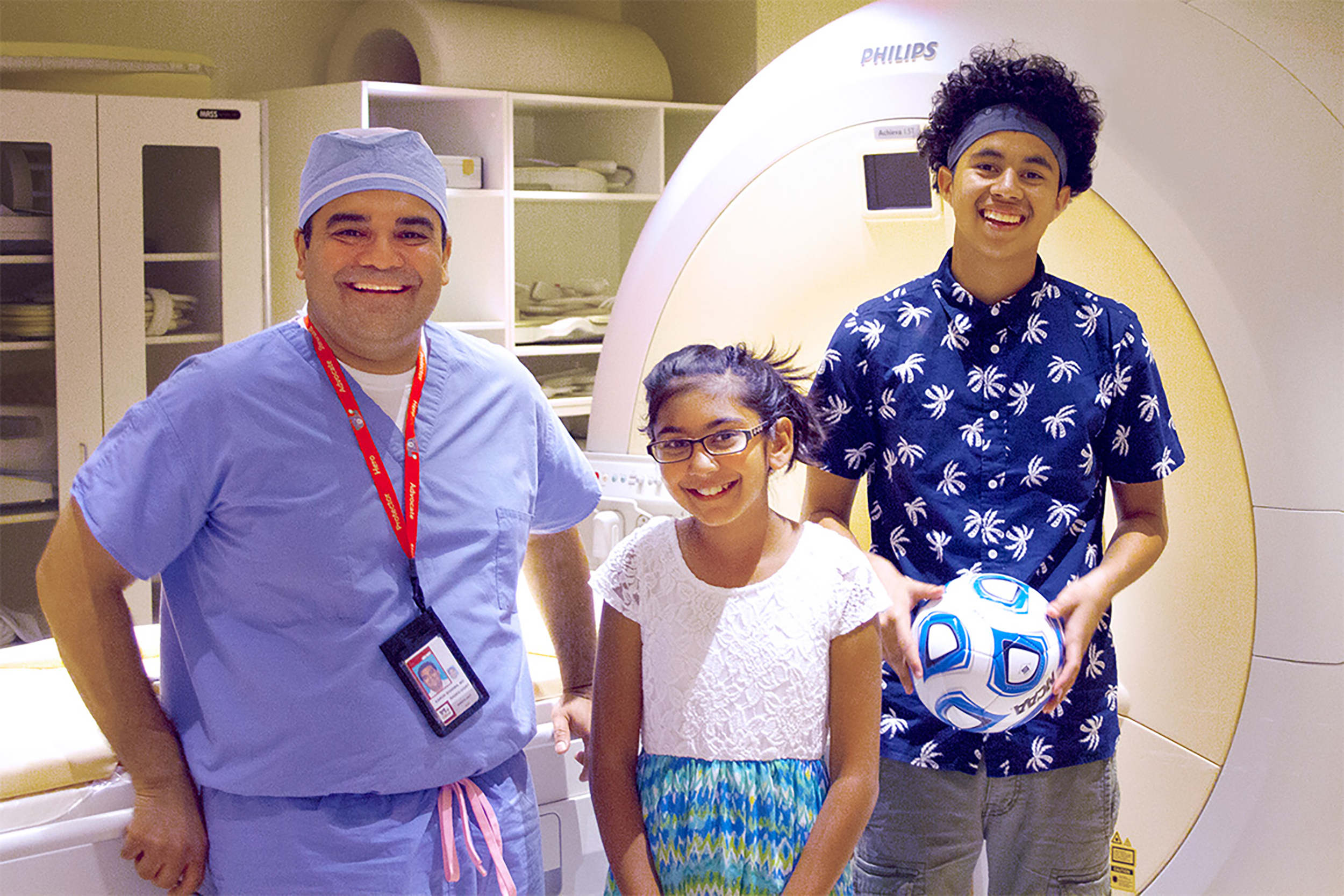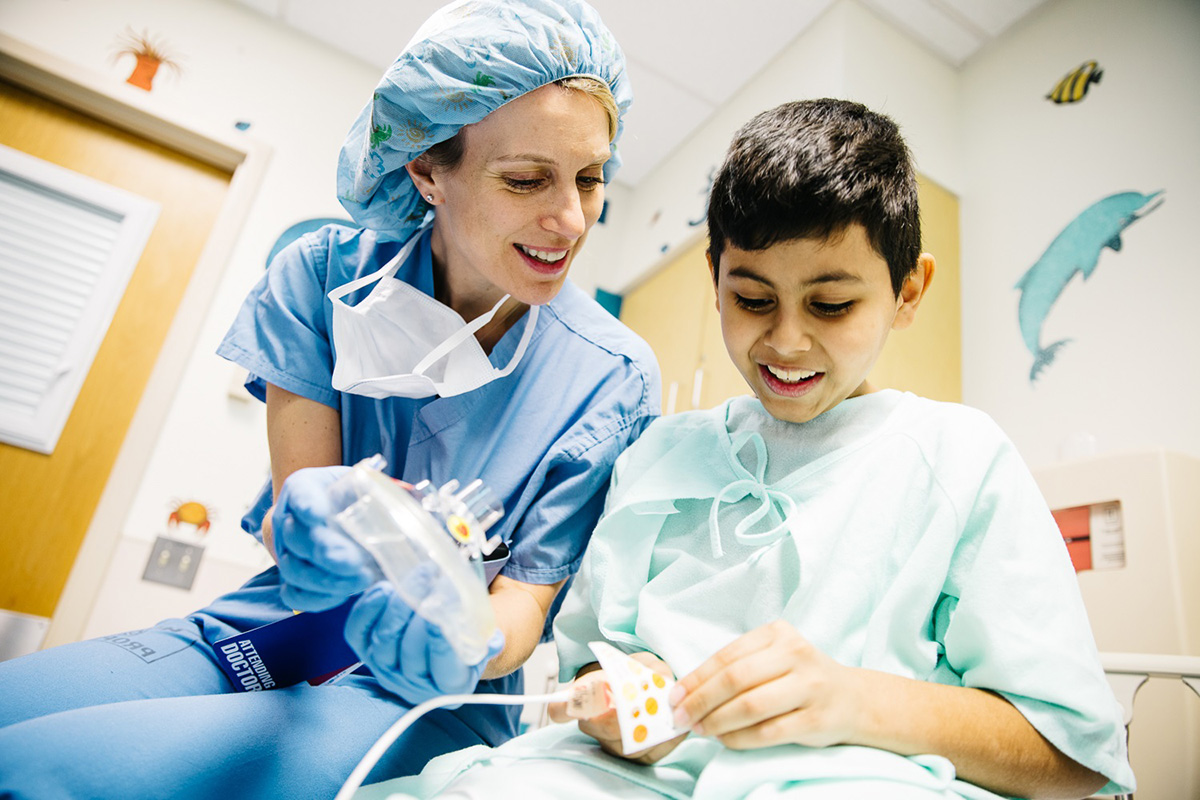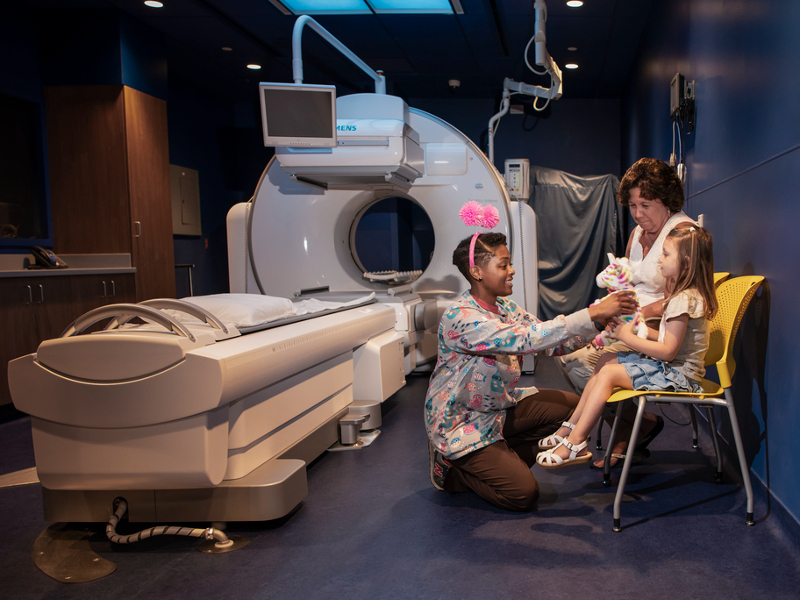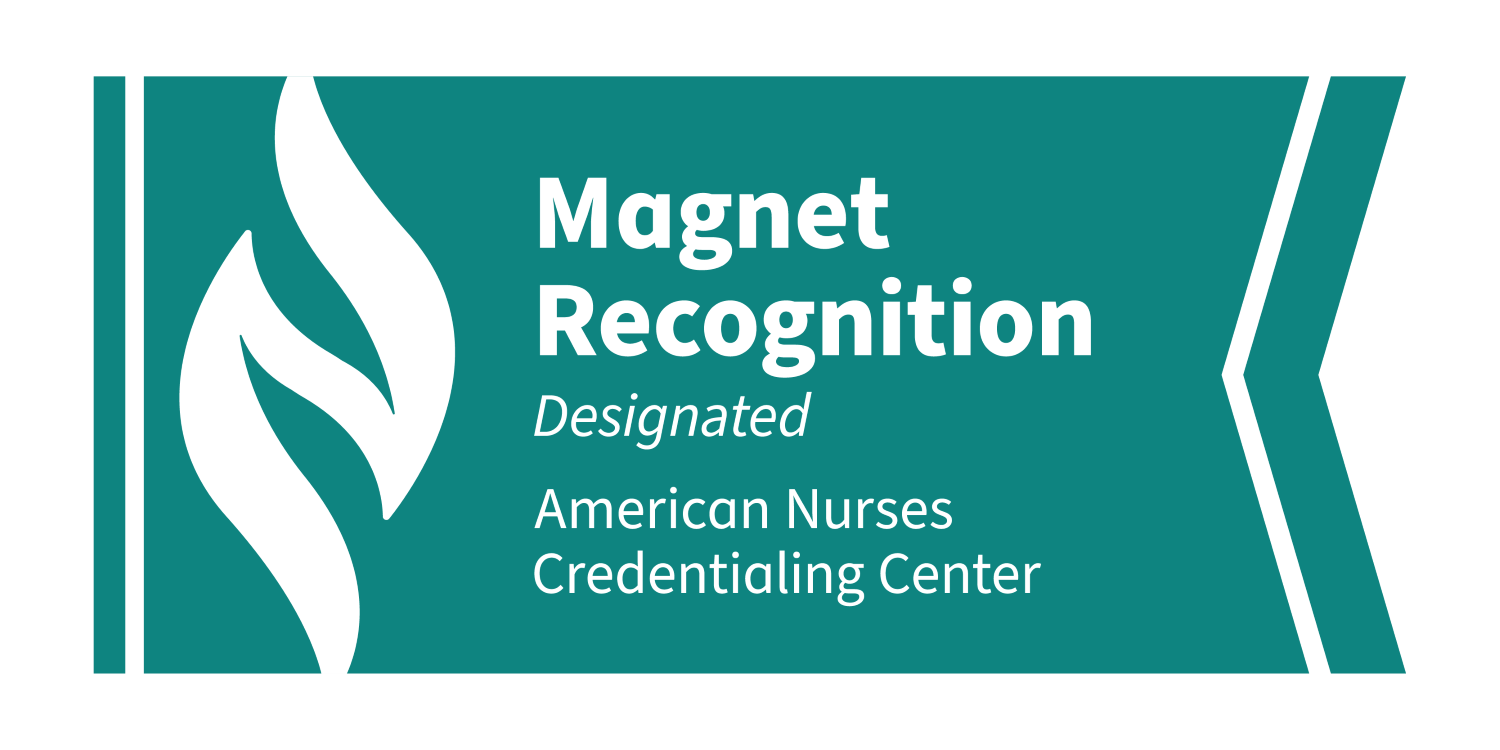Treatment
Pediatric Magnetic Resonance Imaging (MRI)
Magnetic resonance imaging (MRI) is a procedure that uses a large magnet, radio waves and a computer to create detailed images of organs and tissues in the body. It’s used to diagnose problems in many areas of the body.
There are different types of MRI machines. Some look like narrow tunnels. Others are more open and may be a choice for children who can’t handle small, confined spaces. The machine creates a strong magnetic field, which works with radio waves to change the position of the body’s hydrogen atoms. As they go back into correct position, they send out signals. A computer receives the signals and converts them into images of the body. This image appears on a computer screen.
Frequently Asked Questions
Why might my child need an MRI?
What are the risks of an MRI in children?
How do I help my child prepare for an MRI?
What happens during an MRI in children?
What happens after an MRI in a child?
Departments that Offer Magnetic Resonance Imaging (MRI)

Diagnostic Imaging and Radiology
Diagnostic Imaging and Radiology at Children's National Hospital utilizes an expert team and advanced equipment designed for children to provide diagnostic images for infants, adolescents and teens. Learn more about this department.

Help Kids and Make a Difference
Invest in future cures for some of life's most devastating diseases. Give today to help more children grow up stronger.












